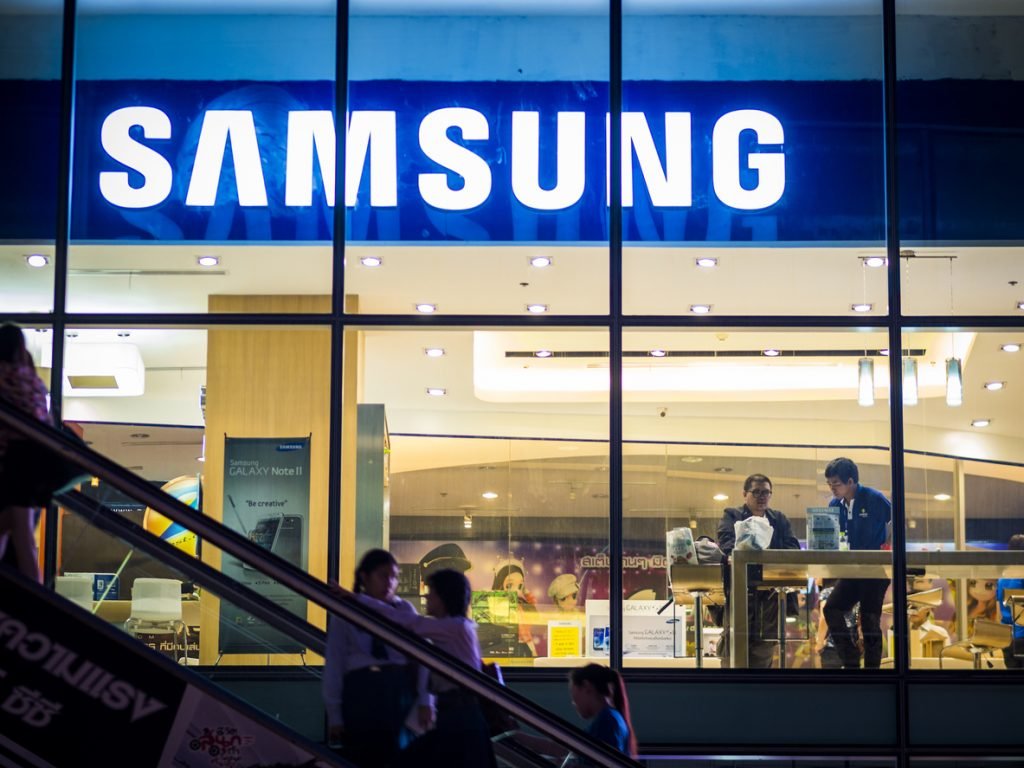
Samsung Electronics delivered a record-breaking first quarter in 2025, but beneath the headline figures lies a company navigating one of the most critical transformations in its history — from semiconductor giant to AI-first innovator.
The South Korean titan reported KRW 79.14 trillion ($55.4 billion) in revenue — the highest ever for a single quarter — with operating profit rising to KRW 6.7 trillion ($4.68 billion). While the topline impressed, the underlying story tells of a business at a crossroads: triumph in mobile, turbulence in chips, and uncertainty in the face of global trade shifts.
Smartphones Shine, But Chips Show Strain
Samsung’s Mobile Experience (MX) Division carried the quarter, generating KRW 37 trillion in revenue and KRW 4.3 trillion in operating profit — its best performance in four years. The Galaxy S25 series, powered by the company’s Galaxy AI platform, led the charge, proving that on-device intelligence is fast becoming a decisive consumer differentiator.
The real drag came from Samsung’s Device Solutions (DS) Division, which oversees semiconductors. Revenue there fell to KRW 25.1 trillion, and operating profit dropped 42% year-over-year. The culprit? Softening demand for high-bandwidth memory (HBM), a key component for AI infrastructure, and ongoing export restrictions on advanced chips.
Samsung cited deferred customer demand ahead of its upcoming HBM3E products and ASP (average selling price) erosion as key reasons for the slump — a stark contrast to local rival SK Hynix, which recently posted a 158% surge in profit and overtook Samsung in DRAM market share.
Trade Tensions Cast a Long Shadow
Beyond the numbers, Samsung’s outlook has grown cloudier. The company declined to provide its usual business forecast for Q2, citing escalating global trade tensions and shifting economic policies.
The U.S. government is currently investigating tariffs on key product categories — including smartphones and displays — many of which are manufactured in Vietnam and South Korea. Although Samsung’s flagship products remain exempt for now, the situation is fluid. The company is actively considering relocating some manufacturing operations to mitigate potential fallout.
Doubling Down on AI, From Phones to Foundries
Despite these headwinds, Samsung is going all-in on AI. The company increased R&D spending by 16% year-over-year in Q1 2025, hitting KRW 9 trillion — its largest quarterly investment in innovation ever.
The strategy is twofold:
-
Consumer AI Expansion
The company plans to democratize AI access through the mid-tier Galaxy A series, which will gain “Awesome Intelligence” features, while also launching a new Galaxy S25 Edge device in Q2. Foldable phones with next-gen AI capabilities are also in the pipeline. -
Semiconductor Recovery Plan
Samsung is betting that the ramp-up of its HBM3E 12H memory chips and server-centric portfolio will help it regain momentum in the high-value AI chip market. Demand for AI infrastructure, particularly GPU-driven applications, is expected to spike in the second half of the year, and Samsung hopes its ultra-fast LPDDR5x memory and 2nm GAA foundry process will put it back in contention.
Investors Cautious Amid Competitive Pressure
Despite the record-setting revenue, Samsung shares dipped slightly following the announcement — a reflection of investor unease over geopolitical risks and the competitive gap opening in the semiconductor arena.
SK Hynix’s dominance in the HBM segment — a cornerstone of modern AI server workloads — poses a clear challenge to Samsung’s traditional leadership. With SK Hynix capturing 36% of global DRAM revenue to Samsung’s 34%, the competition has clearly intensified.
A Defining Moment for the Tech Giant
Samsung has reinvented itself before — from consumer electronics to memory chips, from feature phones to foldables. But this moment feels different. The convergence of AI, geopolitics, and shifting supply chains has created a high-stakes inflection point.
Will Samsung’s enormous bet on AI deliver a renaissance in semiconductors and cement its place as a leader in the next era of intelligent devices? Or are we witnessing the slow rebalancing of global tech leadership — with new players redefining what dominance means in the age of AI?
The rest of 2025 may well decide.

